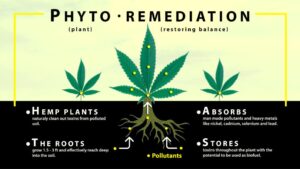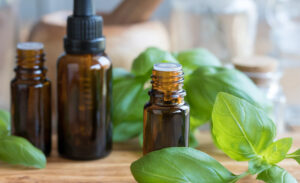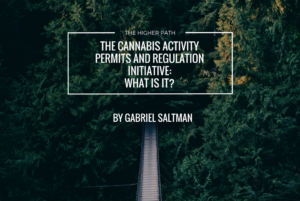A hot buzzword heard these days is CBD, but there is a difference in hemp and whole plant CBD. Hemp has always been a part of our history with its incredible variety of uses and benefits. It has grown in popularity exponentially in the last few years having become federally legal through the Farm Bill in 2018 and with the CBD craze that has flooded the market in every way imaginable for ailments from anxiety and sleep to chronic autoimmune disorders. This increase in production and popularity, while a step in the right direction, has its concerns since the industry has never had a regulated testing structure and the important fact that hemp and cannabis share a natural ability called phytoremediation.

Phytoremediation comes from the mix of two greek meanings. The Greek term phyto meaning “plant” and Latin the term remedium meaning “restoring balance.” This process is essentially when plants vacuum up the toxins of the earth and degrade them, cleaning the soil from past mistakes like poor farming, industrial waste dumping and nuclear incidents. These contaminants can include but are definitely not limited to:
- Heavy Metals
- Radioactive Elements
- Pesticides, Herbicides, and Fungicides
- Explosives
- Fuels
Farmers have been using hemp to clean the soil for their crops for decades. Researchers have found the efficacy of its cleansing abilities so powerful that after the Chernobyl disaster in Ukraine in the late 1980s early 90’s, they began to plant hundreds of hemp plants in the city to absorb the mass amounts of radioactive material and contaminants left over from the explosion.
While this ability has an incredible advantage, it also has some dangerous drawbacks when it comes to mass production. Farmers have infamously replanted hemp in their old crops soil where certain pesticides may have been used in the past and are now deemed unsafe or dangerous to consume. Being so absorbent it is very likely for a hemp plant to be contaminated with these toxins and metals such as lead, cadmium, zinc, nickel and even arsenic which are stored in the shoots and leaves of the plant until it dies or eventually releases them into the air through a similar process called Phytovolatilization. These harmful chemicals if ingested or smoked can severely damage your brain and nervous system and possibly lead to a variety of cancers.
Something else to consider is the amount of yield necessary to acquire CBD from hemp. Approximately only 10% of the plant contains enough CBD to salvage and one plant can produce close to a pound of crude oil. This means it requires large amounts of the plant to be processed in order to meet the extremely high demand while also concentrating all the contaminants along with it. This is why it is extremely important to create a standard of testing for hemp products much like the cannabis industry has done to make sure these pollutants are not along for the ride.
Since the majority of the hemp we use in the US is imported from other countries like China where heavy metal contamination in their soil is much more prevalent, the standard of regulations for testing are thrown out the window. In 2018, the US imported 3.3 million dollars worth of hemp and its seeds from China who is estimated to contribute to nearly ⅕ of the world’s hemp supply. Due to the terribly inconsistent and unregulated world hemp market it is likely these imports are contaminated and still sold over the counter without proper testing. These tests, as well as within the US, are done by third party accredited lab companies who are most likely financially tied to these brands and could have different or more lenient laws within their state or country.
This leaves a lot of concern about how “clean” these products really are and if they are doing more harm than good. Hemp suppliers should be providing certificates of origin to certify that the hemp was grown in the US, they should have records and tests of pesticide and contaminant free soil for at least the last 5 years, quality control procedures and public records of testing through third party accredited labs and batch testing to make sure the cleanliness is consistent. Facetiously thanks to the War on Drugs, these labs typically only test for the amount THC content of the plant being that it’s the only legally binding request. That amount of THC cannot exceed .3% or else it is considered cannabis and not federally legal to sell.
The hemp plant is an amazing godsend that has the potential to help so many people with relief and create so many unique and wonderful things that we use everyday. We have to be the adults in the room and demand responsible and regulated testing for the hemp industry, much like the cannabis industry so we can have safe and trusted access to this miraculous plant.
Ask your budtender to show you the certificate of analysis for any product carried in a legal dispensary so you can have peace of mind that what you are consuming has no harmful elements.
Resources:
https://www.marijuanamoment.net/epa-announces-review-of-pesticide-applications-for-hemp/
https://wayofleaf.com/blog/where-does-the-u-s-get-its-hemp-from
https://www.ncbi.nlm.nih.gov/pmc/articles/PMC3108117/
https://www.lostleafnaturals.com/heavy-metals-in-hemp-a-serious-conversation/#
https://hempindustrydaily.com/epa-approves-10-pesticides-for-hemp-production/
https://www.epa.gov/pesticide-registration/pesticide-products-registered-use-hemp
https://www.cannabistech.com/articles/ethical-cbd-understanding-phytoremediation/
https://sensiseeds.com/en/blog/hemp-decontamination-radioactive-soil/




